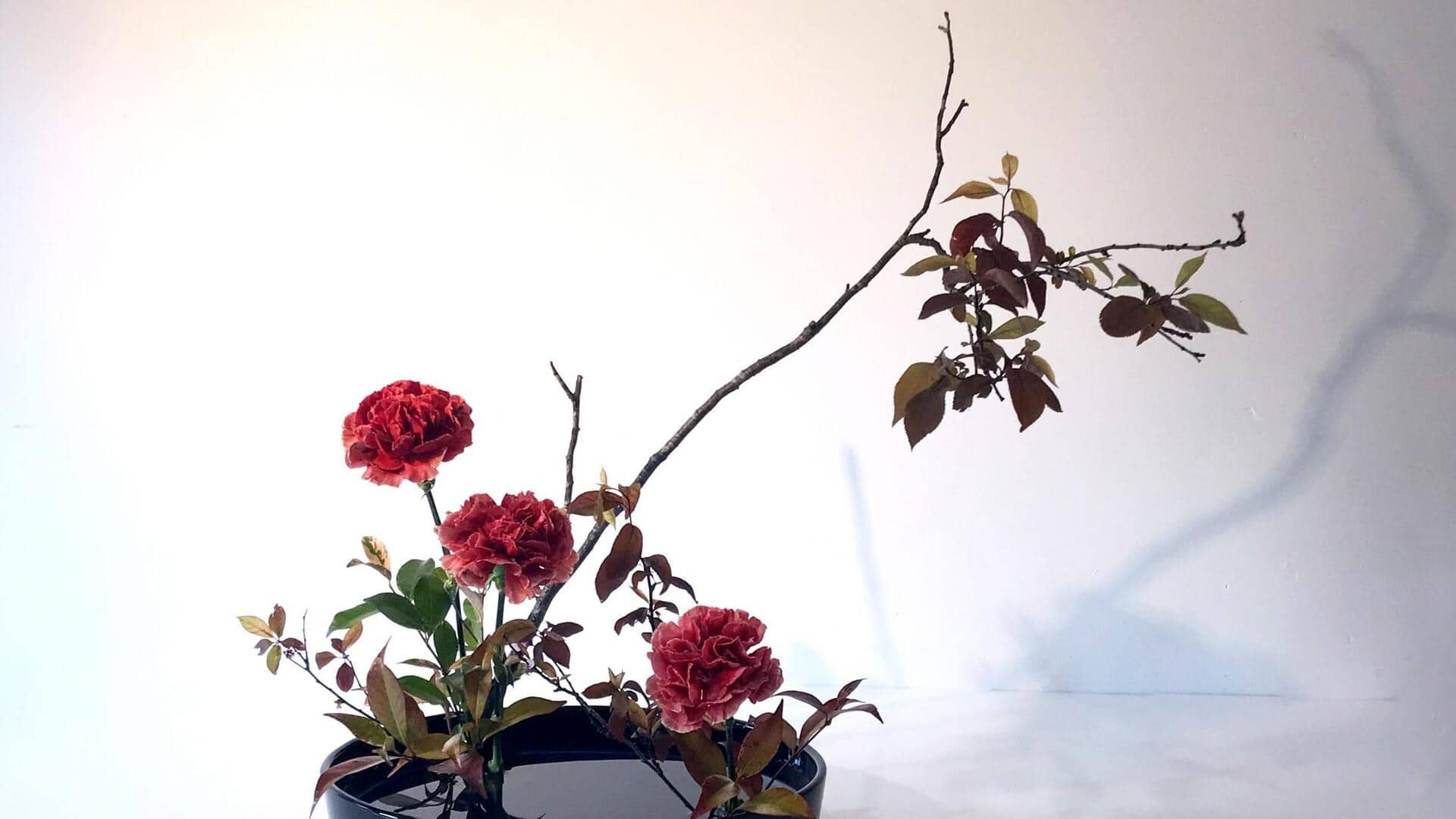
Crafting tranquility with Ikebana floral artistry
What's the story
Ikebana, the Japanese art of flower arrangement, goes beyond simply placing flowers in a vase. It's a disciplined art form that harmonizes nature and humanity. Its minimalist approach highlights shape, line, and form by focusing on the arrangement of leaves, stems, and blossoms in harmony. Ikebana is not just about creating beauty; it's a way of expressing emotion and communicating without words.
Philosophy
The philosophy behind Ikebana
The essence of Ikebana lies in the philosophy of treasuring nature's beauty in all its forms and seasons. This art cultivates patience, discipline, and a deep appreciation for the subtle growth changes in plants. Adherents hold that Ikebana mirrors the harmony between humans and nature, fostering inner tranquility and mindfulness. The meditative focus on the process of arrangement provides a serene refuge from the hustle and bustle of life.
Tools
Essential tools for beginners
To begin your Ikebana journey, you will need some key tools: traditional Ikebana shears known as hasami, a kenzan (or flower frog) for securing your flowers within the vase, and a suiban or shallow dish, which is often used as the container for arrangements. These tools are crucial for creating the precision and harmony that define Ikebana arrangements.
Techniques
Basic techniques to master
Moribana uses a kenzan (spiky frog) at the base of a shallow container to hold branches or flowers in place. In contrast, Nageire focuses on arranging in tall vases without the support of a kenzan. Mastering these techniques requires a keen sense of height, volume, and color contrast balance. These elements are crucial in establishing harmony within the arrangement.
Inspiration
Finding inspiration for your arrangements
Ideas for Ikebana arrangements can come from anywhere - the changing seasons, a beautiful painting, or even a feeling you want to express. Artists often look to nature for inspiration, using locally-sourced flowers and plants or creating miniature landscapes that mirror the world around them. By studying nature's inherent harmony, you can create compositions that not only look beautiful but also bring a sense of peace to the viewer.
Maintenance
Tips for maintaining your arrangement
To extend the life of your Ikebana arrangement, follow these tips: Change the water daily to keep bacteria at bay; recut stems at an angle before placing them back in water; keep your arrangement out of direct sunlight and drafts; and lightly mist the leaves to keep them fresh. Ikebana is not just about beauty, it's about cultivating respect for life through careful maintenance.